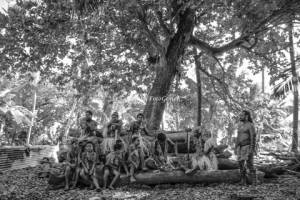In April 2014, 350 Pacific Climate Warriors across the region performed and rallied to mark the start of building canoes for the Pacific Warrior Campaign. Since then, the teams have been working hard on preparing the canoes.
In Vanuatu, as you can see in the video below, the team have been donated a specially selected tree for the canoe building. The video features an interview with master canoe builder, Walter Namua, where he explains the significance of selecting the tree to support the Pacific Climate Warrior campaign.
We’re not usually into cutting down trees, and in fact over the last five years our Pacific organisers have planted thousands of trees, but for this project our teams are cutting down a single tree in each Island. Recognising the significance of the Pacific Climate Warrior Voyage, many of the trees, which have been nurtured and guarded for decades have been donated to our teams. The teams are working with master canoe builders and elders to conduct blessings for each tree, and to get to work in hollowing out the canoe.
Keep reading below to learn more about the significance of canoes in Pacific Island cultures, and what other Island teams are up to with their canoe building.
Check out the the video here: 350 Vanuatu Canoe Project
Why Canoe Building?
In what can be described as a highly significant symbol of the Pacific, canoe building has slowly disappeared in time. The two hulled sailing vessels built by the proud people of the Pacific, have slowly been phased out over the last century in the name of progress and technological advancements.
350 Pacific has embarked on a journey to be part of the small group of people in the Pacific who are trying to revive this very important aspect of the Pacific Culture. In an attempt to regain the ancient knowledge and the art of canoe building and traditional sailing, 350 Pacific, on the 12th of April this year, launched a campaign to encourage young Pacific Islanders across the region to build traditional styled canoes that will be used as a vessel to deliver our messages on climate change to Australia.
For most people in the Pacific, these traditional styled canoes were used in everday life, while very special ones became the most treasured chiefly possession. Building a canoe usually involved the entire community. While there was segregation of roles (men made the hulls and rigs, women made the sails), the entire community – men, women, youth and elders – came together to make the rope and cord that bound the craft together and made it whole.
The trees selected for use of in a canoe build are selected because they grow in areas of poor or infertile growing conditions. It was important that the trees used could withstand the forces of the Ocean as these canoes were used to travel between islands for trade and voyages in the past.
Highlights from the Pacific Climate Warrior Canoe Building Day of Action on April 12th:
- In Pohnpei, Federated States of Micronesia, The Warriors are already underway building the canoe, supported by the village of Enipein, Kitti to learn the process of traditional canoe building from elders.
- Warriors in Tonga performed the Tongan Sipi Tau (war dance) and worked with wood carvers to begin their canoe building.
- In Tokelau they are calling on the support of the people of Atafu, who are famous for canoe building to begin their canoe building project.
- In Papua New Guinea, the Climate Warriors walked through Port Moresby and raise public awareness about Climate Change, the role of the Pacific Climate Warriors in the region and how citizens can support the movement.
